Here’s the final result I’ll be working towards.
Of course, the stroke colors and sizes you’ll need for your design may
be completely different, but the steps for creating the effect will be
the same:
Multiple text strokes using Smart Objects.
Step 1: Add An Initial Stroke To The Text
Here’s the Photoshop document I’m starting with, made up of a single Type layer containing the word “style” (since we’ll be using layer styles to add the strokes) in front of a black background: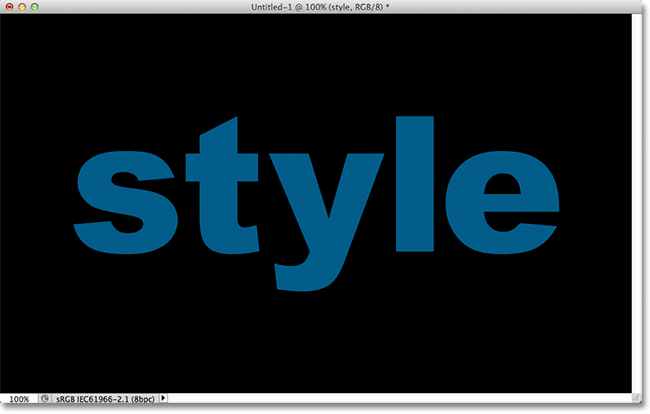
The original document.
If we look in my Layers panel, we see the Type layer above the
Background layer. The Type layer is currently active (highlighted in
blue):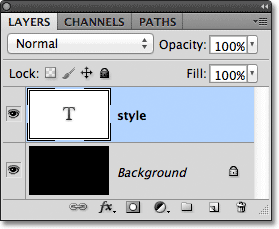
The Layers panel.
To add an initial stroke around the letters, I’ll click on the Layer Effects icon at the bottom of the Layers panel:
Clicking on the Layer Effects icon.
Then I’ll choose Stroke from the bottom of the list of layer effects that appears:
Choosing a Stroke layer effect.
This opens Photoshop’s Layer Style dialog box, with the options for
the Stroke appearing in the middle column. First, I’ll choose a color
for my stroke by clicking on the color swatch at the bottom of the options: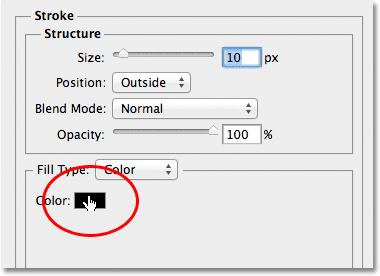
Clicking on the color swatch.
This opens Photoshop’s Color Picker. Since my text
is a fairly dark shade of blue, I’ll choose a lighter shade of blue for
the stroke. Of course, you can pick any color you need for your design:
Choosing a light blue from the Color Picker.
With my color chosen, I’ll click OK to close out of the Color Picker.
I want a thick stroke around the letters, so I’ll increase my stroke Size value to 21 px:
Increasing the stroke size to 21px.
When you’re happy with appearance of your stroke, click OK to close
out of the Layer Style dialog box. Here’s what my text looks like with
the initial stroke added:
The first stroke appears around the text.
Step 2: Convert The Type Layer Into A Smart Object
I now want to add a second stroke around the initial stroke, but that becomes an interesting problem. By default, Photoshop only allows us to add one Stroke effect at a time to a layer. If I was to click again on the Layer Effects icon at the bottom of the Layers panel and again choose Stroke from the list, Photoshop would re-open the Layer Style dialog box set to the Stroke options, but all I’d be able to do is edit the options for the stroke I just added, changing its color, size, or any of the other options, but I couldn’t add a second stroke.At least, I couldn’t add a second stroke around the text itself. But what if we could somehow place the text inside a container, and then add a new stroke around the container? As it turns out, that’s exactly what we can do using Photoshop’s Smart Objects! A Smart Object is essentially a virtual container for the contents of a layer, and all we need to do is convert our Type layer into a Smart Object, at which point we can add a second stroke around the Smart Object!
To do that, click on the menu icon in the top right corner of the Layers panel. This will open a list of various options:
Clicking on the menu icon.
Choose Convert to Smart Object from the list of menu choices: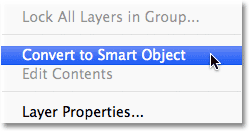
Choosing Convert to Smart Object.
Nothing will seem to have changed in the document window, but if we
look in the Layers panel, we see that the Type layer has been converted
into a Smart Object. A Smart Object icon is displayed in the lower right corner of the preview thumbnail:
The Type layer is now a Smart Object.
Step 3: Add A Stroke Around The Smart Object
With the text now inside a Smart Object, click on the Layer Effects icon at the bottom of the Layers panel and once again choose Stroke from the bottom of the list: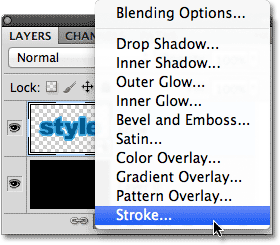
Choosing another Stroke layer effect, this time for the Smart Object.
Photoshop will again open the Layer Style dialog box set to the Stroke options. To change the stroke’s color, I’ll click on the color swatch
as I did before and when the Color Picker appears, I’ll choose the same
darker shade of blue as my text. I’ll leave the new stroke’s Size option set to the default value of 10px, which will make the second stroke thinner than the initial one: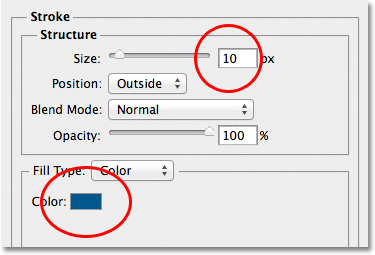
Setting the new stroke to the same color as the text, and leaving its size set to 10px.
When you’re done, click OK to close out of the Layer Style dialog
box. If we look at my text in the document window, we see that the
second stroke now appears around the initial one. Even though it looks
like the new stroke is around the text, it’s actually around the Smart
Object that’s holding the text:
A second, darker blue stroke now appears around the initial stroke.
Step 4: Repeat Steps 2 And 3 To Add More Strokes (Optional)
Photoshop allows us to nest Smart Objects inside other Smart Objects, which means we can use this technique to add even more strokes if we like! All we need to do is repeat Steps 2 and 3. First convert the current Smart Object into a new Smart Object by clicking on the menu icon in the top right corner of the Layers panel and choosing Convert to Smart Object from the list. This will place the current Smart Object inside a new one. Then, add a stroke around the new Smart Object by clicking on the Layer Effects icon at the bottom of the Layers panel and choosing Stroke from the list.I’ll add a third stroke around my text, this time set to the same lighter shade of blue as the initial stroke. I’ll leave its Size set to the same default value of 10px:

Adding a third stroke around the text (after creating another new Smart Object).
I’ll click OK to close out of the Layer Style dialog box, and I now
have three strokes around my text! As we’ve learned though, it only looks
like I have three strokes around the text. In reality, only the inner
stroke is around the text itself. The middle stroke is around the Smart
Object containing the text, and the outer stroke is around a new Smart
Object containing the original Smart Object (which is containing the
text):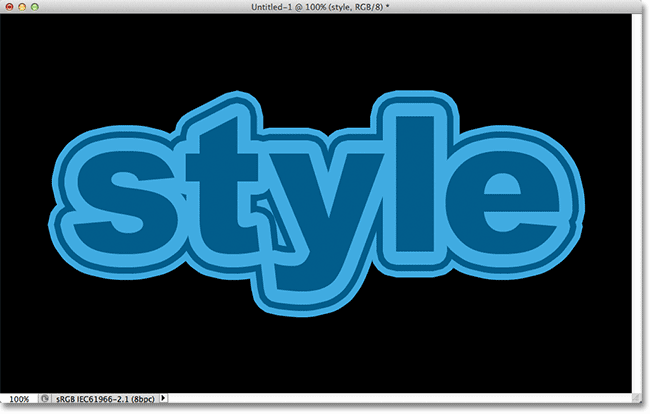
The final result.
And there we have it! That’s how to quickly and easily add multiple strokes around text in Photoshop using Smart Objects!
Hope you enjoy
it &learn something new from this tutorial.
Determinebest
quality clipping path, clipping
path service, low cost clipping path or photoediting&image
masking service
from Clipping Design. Clipping Design always assurephotoshopmasking, image
editing service
at quick turnaround time with Guaranteed client satisfaction on top quality SEO service. You can also discover 100% handmade clipping path&clipping path service in reasonable price.
Thank you…
Reference: photoshopessentials
The service mainly is to extract pictures from history or getting rid of backgrounds without damaging the actual image. There are several types of clipping path service based upon their difficulty degree ranging from fundamental to extremely complicated clipping Path.
ReplyDelete